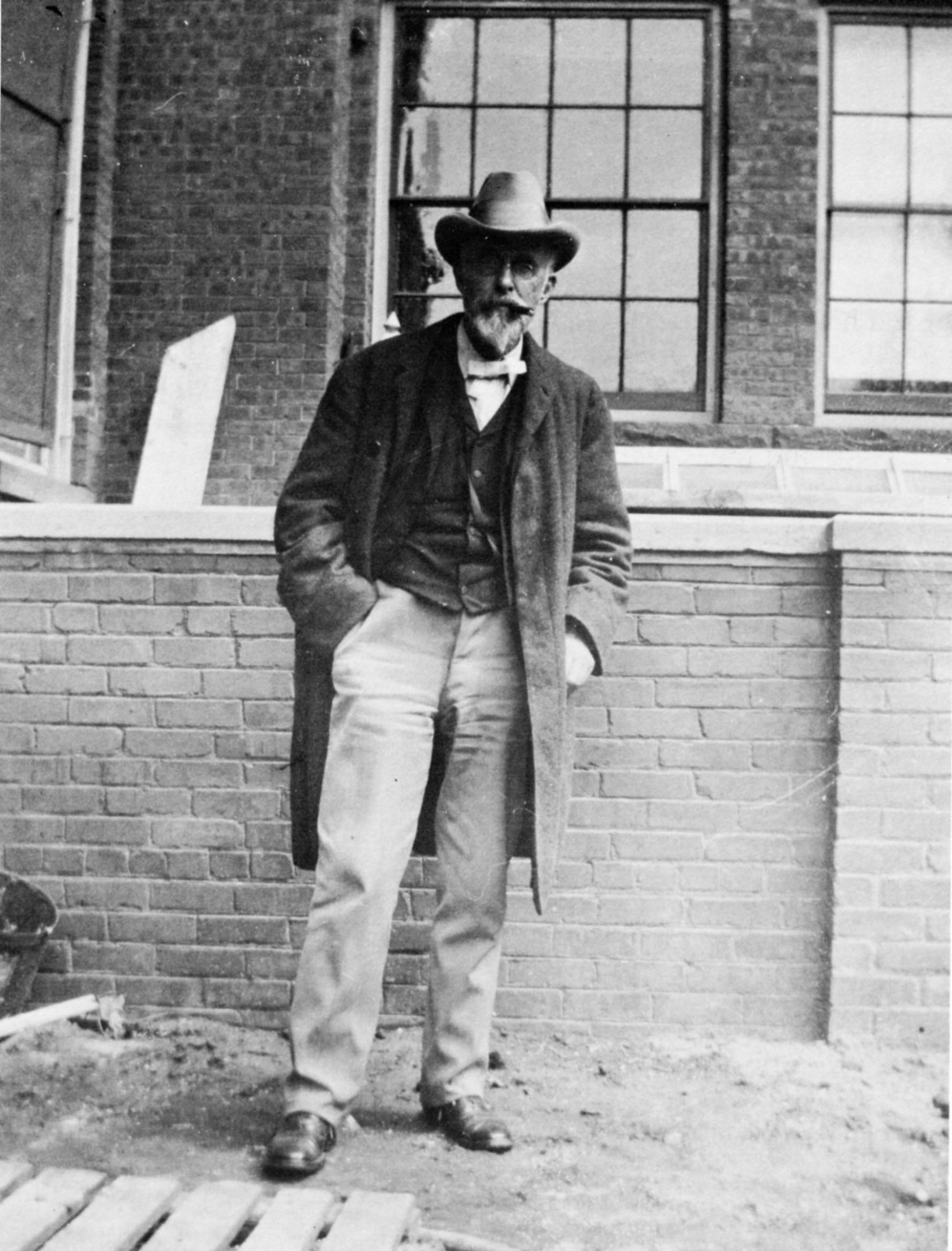- Introduction
- ES Morse
- Morse in New England
- Morse as an illustrator
- Morse in Japan
- Morse's pottery collection
- Charles Otis Whitman
- Shosaburo Watase
- Umeko Tsuda and Sutematsu Yamakawa
- Katsuma Dan
- Emperor Showa (Hirohito)
- Shinya Inoue
- Osamu Shimomura
- Susumu Honjo
- --------
- E.S. Morse Institute
- Institutional Cooperation
- Fukushima
- About
An American Scientist in Japan
In 1853, after 200 years of self-imposed isolation in a medieval state, Japan was forcibly opened to the world. Within 20 years, after great internal strife, the new Meiji government, unified under the Emperor, turned avidly to the West, trying to catch up to the progress of the world. In striving to increase their knowledge and bring their country into the modern era, the government sent individuals and delegations to Europe and the United States. Young men were sent to study at universities. Soon after, foreigners were invited into Japan to teach.
Edward Sylvester Morse, 1838-1925
It was at this point that Edward Sylvester Morse entered Japan. Although he was there solely in pursuit of the marine invertebrates Brachiopods, he quickly became fascinated with the country, realizing that the way of life he was witnessing was about to disappear as Japan modernized.

E.S. Morse. From Japan Day by Day, by Money Hickman and Peter Fetchko.
Early in his career, in 1877, E.S. Morse visited Japan to collect Brachiopods. Shortly after his arrival, he was invited to be the first Professor of Zoology in Japan and develop natural history and zoological studies at the Imperial University of Tokyo (now University of Tokyo).
During his time in Japan, Professor Morse created the first marine station at Enoshima, established scientific studies on the evolution of the Brachiopoda, and brought the studies of evolution and zoology into Japanese science classrooms.He also discovered the ancient shell Mounds of Omori and dug a collection of ancient Japanese pottery still on display at the University of Tokyo.
While in Japan, Morse kept a detailed daily journal with his precise illustrations. Later, while at the Peabody Museum in Salem, Massachusetts, where he served as Director from 1880-1916, Morse turned his notes into an account of “Japan Day by Day”, and also “Japanese Homes and Their Surroundings.” Both books became very popular and educational; both recorded a vanishing culture.
He also collected and researched ancient Japanese pottery formulating a comprehensive catalog that has been translated into Japanese. Morse curated three collections of ancient and modern pottery, one in Japan, one in the Boston Museum of Fine Arts, and one at the Peabody-Essex Museum.
Morse was the recipient of many honors, and became a member of the U.S. National Academy of Sciences, and served as its President. He held four honorary doctorates: from Bowdoin College (1871), Harvard University (1892), Yale University (1918) and Tufts University (1922) and is remembered across Japan with numerous statues and monuments.
In 1898 he was awarded the Order of the Rising Sun for his contributions to Japan and in 1922, he was also honored with the Order of the Sacred Treasure.